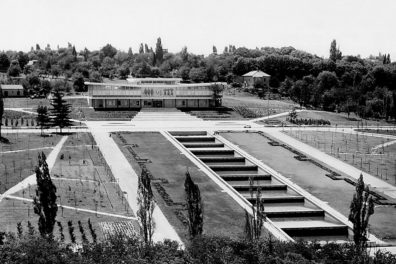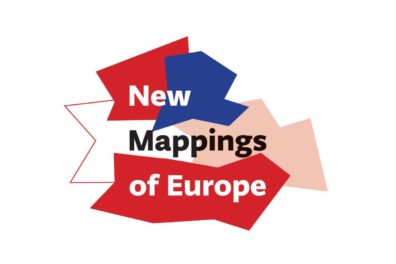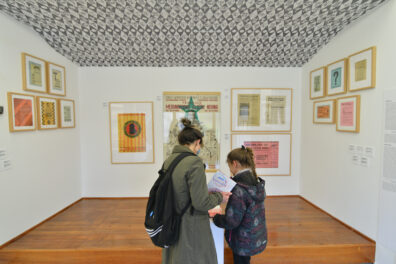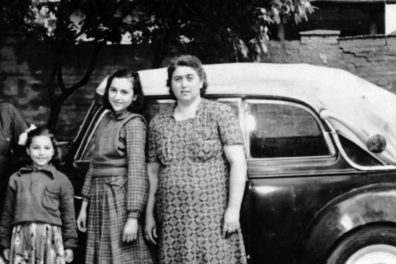The Project Cabinet Yugoslavia in Six Museums and a Gallery
The Museum of Yugoslavia will begin marking the hundredth anniversary of the formation of the Yugoslav state with the project Cabinet Yugoslavia, in cooperation with partner institutions of culture, within the manifestation Museums for 10, which this year has the theme Hyper-linked Museums – New Approaches, New Audience. The event will last from May 14 to May 20, and will include the National Week of Museums, the European Day of Museums (May 18) and the European Night of Museums (May 19).
The project Cabinet Yugoslavia has three objectives: to approach the Belgrade audience, to promote the diversity of its collections, and to promote inter-institutional cooperation. The authors of the project are: Momo Cvijović, museum advisor, Miloš Bogdanović, curator, and Ana Radić, public relations associate.
The objects were selected in order to show the value of the Museum of Yugoslavia’s exhibits, which may also be important parts of the collections of other museums. During the event, the project will include: Museum of Contemporary Art, Belgrade; Museum of Vuk and Dositej; Museum of Ivo Andrić; Jewish Historical Museum, Belgrade; Natural History Museum in Belgrade; and Museum of Applied Arts, Belgrade.
Items to Be Exhibited in the Museums During the Event:
Museum of Contemporary Art, Belgrade – a photo of the Museum of Contemporary Art in construction, June 1963, taken by Josip Broz Tito during a trip by ship Krajina with the President of Indonesia, Achmad Sukarno.
Museum of Vuk and Dositej – correspondence between Vuk Karadžić and Isidor Stojanović, rector of the Belgrade Lyceum from 1833 (one letter from Vuk Karadžić and two letters from Isidor Stojanović), gift to Tito from Dr. Ljubomir Vulović, head of the children’s department of the Railway Hospital in Belgrade, June 5, 1956.
Museum of Ivo Andrić – the book Bosnian Chronicle, from the collection of the Library of Josip Broz Tito, in Arabic, from 1964, translated by Dr. Sami Droubi, a Syrian politician, diplomat, writer, translator, and Syrian ambassador to Yugoslavia, Brazil and Morocco. Several photos from our fund will also be exhibited – a meeting between Josip Broz Tito and Sami Droubi while he was an ambassador in Yugoslavia, as well as photographs by Ivo Andrić from the legacy of Stevan Kragujević.
Jewish Historical Museum, Belgrade – a gift to Josip Broz from Dr. Nahum Goldmann, President of the World Jewish Congress, 1972: a cup, a pitcher and a bottle from the Roman period, I century AD., Palestine.
Natural History Museum in Belgrade – a collection of eleven minerals and crystals (rodohrozite, barite, crystal gypsum, quartz pseudomorphose, galenite, siderite), packed in a specially handmade cabinet. The gift from the mine collective Zletovo, Macedonia.
Museum of Applied Arts, Belgrade – silver bowl with a lid, a gift from Elizabeth Taylor and Richard Barton to Josip Broz Tito, 1971. Manufacturer: Fumanti, Italy.
The Gallery at Andrićev Venac 2, within the exhibition of the Ministry of Internal Affairs of the Republic of Serbia, History of Police in Serbia – the fetter and the baton from the period between the two world wars, originating from the Penitentiary Institute Sremska Mitrovica. The prison in Sremska Mitrovica was built from 1895 to 1899, according to the order of Emperor Franz Joseph, while Sremska Mitrovica was part of the Austro-Hungarian Empire. After 1918, until the start of the Second World War, the prison was part of the penal system of the Kingdom of SHS, that is, of the Kingdom of Yugoslavia.
- Day: 14.05-20.05.2018

The Origins: The Background for Understanding the Museum of Yugoslavia
Creation of a European type of museum was affected by a number of practices and concepts of collecting, storing and usage of items.

New Mappings of Europe

Museum Laboratory
Starting from the Museum collection as the main source for researching social phenomena and historical moments important for understanding the experience of life in Yugoslavia, the exhibition examines the Yugoslav heritage and the institution of the Museum

